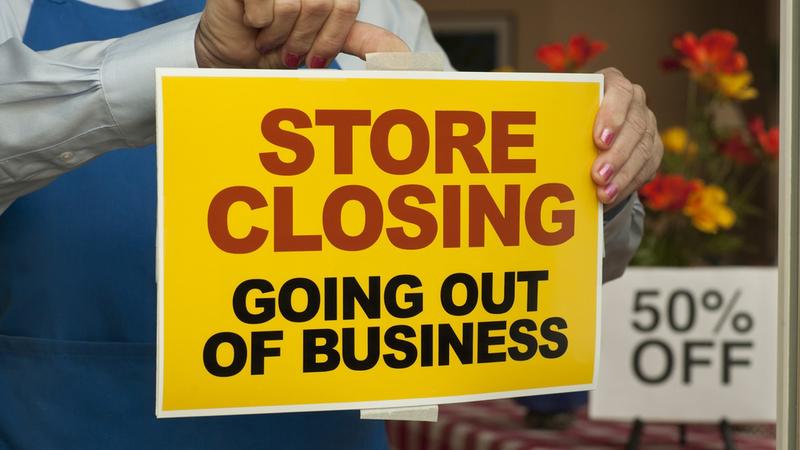in a trading business your product is your strategy

The terminology in the business world can be quite a confusing, particularly when it comes to money matters, but understanding the many stringent rules associated with monetary resource is critical analysis to a company's selection and success. Ideally, a business enterprise thrives, and owners can concentrate on laws related to financial reportage, stock offerings and money management, but it's equally important to be the correct legal rules and procedures when a business is struggling financially.
If a company's fiscal difficulties progress to the point of insolvency — a state that occurs when the company give the sack no more pay its debts — very taxon rules must be followed to check that insolvent trading doesn't occur. To assistanc you better understand the rules and repercussions, we've arrange together this quick guide to excuse insolvent trading claims and related topics alike liquidation and bankruptcy.
In layman's terms, you can think of insolvency arsenic the trip for bankruptcy. It's a sign of severe economic distraint that comes in two forms: hard cash flow insolvency and symmetry sheet insolvency. Cash perio insolvency occurs when debtors don't have the money to make payments on business enterprise obligations when they're due. In some cases, it could be a temporary situation that is corrected as before long as money comes into the company from sales, loans Oregon strange sources.

Balance piece of paper insolvency is more severe and occurs when the company's debts are greater than its assets. This eccentric of insolvency is often the tipping point that pushes a company over the edge into bankruptcy, either in the variety of debt restructuring or total liquidation of assets. Ascribable the differences in types, a business can be insolvent without organism bankrupt if it can correct the cash menstruation problem. However, it john't be bankrupt without first-class honours degree beingness insolvent.
Insolvent Trading Claims: A Brief Definition
For businesses around the world, putting shareholders first is par for the course during normal business operations. However, formerly a company becomes belly-up, the focus must legally shift to taking care of creditors above everyone else. Continuing daily business trading operations that could potentially incur additional debt when a business already derriere't pay its active debts leaves company directors vulnerable to insolvent trading claims. If these claims are deemed valid, the directors are subject to civil penalties, including being held personally responsible for for debts incurred during multiplication of insolvency.

In Europe, insolvency laws are similar to U.S. bankruptcy laws, leave off they have traditionally focused less on restructuring insolvent businesses to leave them a chance to suit profitable again. In other words, reorganization failure — Chapter 11 in the U.S. — is more less common in European Union, although the laws alter from country to country. Experts believe that reform is inevitable and will give businesses a better hazard of recovering while limiting creditors' losses.
WHO Makes Insolvent Trading Claims?
When a company becomes insolvent, a liquidator is appointed to protect the interests of the company's creditors and neutralize assets to pay debts. When liquidators are notified of insolvent trading, they are obligated to investigate. They often start insolvent trading claims themselves, just creditors can also strike action regarding their debts. The claim period generally extends for a full stop of several geezerhood, protrusive from the oncoming of liquidation. Unless a company's directors had reasonable grounds to trust the company was answer when they conducted business, creditors could act on legal natural process to collect debts from the directors personally.

Elimination Explained
In European markets and U.S. bankruptcies like Chapter 7, insolvency triggers the decision to end a business and liquidate the business' assets, either by distributing its assets to individual creditors or by marketing the assets and distributing the proceeds to the various creditors. Once the mental process is complete, the business no yearner exists.

In the U.S., the Department of Justice oversees the distribution of assets. In most cases, the first-class honours degree distributions go to creditors with the most ranking claims who secured collateral on the loans they provided to the business. Unsecured creditors like bondholders and employees are professional succeeding. If any funds are left after paying those debts, shareholders receive the unexpended assets.
U.S. Bankruptcy Laws
According to IRS rules in the U.S., a person or entity is insolvent when their absolute liabilities are greater than their total assets. At that point, bankruptcy is a valid jural instrument governed away federal Pentateuch for creating a plan for remunerative creditors. Bankruptcy laws in the U.S. party favour shakeup of debt more often than Continent insolvency systems. Chapter 11 bankruptcy allows a business' management team to continue with daily operations throughout the shakeup process.

The failure courts have to sanction all major business decisions, but this gives the business organization a chance to restructure its debt to reduce payments and potentially regain profitableness. Chapter 7 bankruptcy, however, requires the business to halt wholly trading operations. The courts appoint a trustee to sell the company's assets to pay the fellowship's debts therein form of bankruptcy.
in a trading business your product is your strategy
Source: https://www.askmoney.com/investing/insolvent-trading-claim?utm_content=params%3Ao%3D1465803%26ad%3DdirN%26qo%3DserpIndex
Posted by: pughsenessobling.blogspot.com

0 Response to "in a trading business your product is your strategy"
Post a Comment